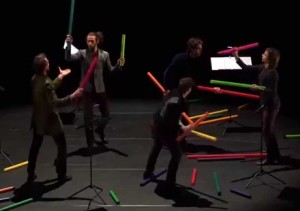The Arts and Entertainment

In a recent post stimulated by a conversation with David Nordfors and Pramod Khargonekar and his team at NSF, I suggested a more general definition for innovation:
Innovation is the creation and delivery of surprising new knowledge that has sustainable value for society.
All innovations are surprising and all are, to some degree, sustainable. Otherwise, as we have discussed at this blog, they are not innovations.
The definition given above includes not just commercial innovations but also those from the arts, literature, basic research, and all knowledge-based activities. Picasso and Shakespeare were transformational exemplars of these types of innovations.
This definition is also more readily accepted by academics who too often mistakenly believe that they are not innovators. They think that innovation is only something that commercial people do.
My friend Herman Gyr recently sent me a video. It showed a group of jugglers playing Bach by using plastic tubes of various lengths that produce different notes when hit. You can see it here. It is a wonderful example of creativity. How did they ever think of doing that?
Creativity occurs when two or more ideas are combined to create something new and surprising. In this case jugglers often use objects of different sizes and shapes as part of their acts. Some use plastic tubes of various lengths which, when struck, produce unique musical notes. It is easy to imagine one juggler saying to another, “Do you think we can juggle tubes of different lengths and play a tune at the same time?” “Sure, let’s try.”
That was the start. They then had to take their creative idea and transform it into a performance that was so entertaining and surprising that their audiences would want to see. As you can see, they did.
But did they create and deliver an innovation? Yes — one that represents surprising new knowledge and, at least for a while, has sustainable value for a segment of society. First audiences are paying to see these performances. And second, people like us are sharing it with our friends around the world.
It is impossible to say how long this idea might be around. More likely it will be the inspiration for additional creative ideas. New knowledge builds on old knowledge. And media, like YouTube, help make it available to the world.
This is a micro-innovation, as is most popular entertainment. And the tubes, Boomwhackers, have become successful musical toys, having sold millions of units.
Society is made up of millions of small innovations of all kinds. They add to progress and make life more enjoyable. And every hundred years or so, another Shakespeare or Beethoven appears.